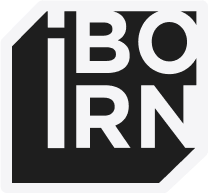Design systems are no longer just for developers and product teams. As marketing shifts from static campaigns to continuous content streams, consistency, speed and scalability are just as critical as creativity. That’s where Figma Buzz comes in, the tool designed to give marketers their own “dev mode”, bringing automation, reusable templates and collaboration into the heart of content creation.
In this article, we’ll explore how to build a design solution for marketing teams, following a complete design system with Figma Buzz, so your team can spend less time chasing templates and more time crafting campaigns that convert.
Why Each Marketing Team Needs a Design System
Think of the design system as a comprehensive toolkit of reusable design components, patterns and rules that ensure consistency across all marketing assets. For marketing teams specifically, having a design system is essential because:
-
Brand Consistency
Marketing is often the first touchpoint a customer has with a company. A design system ensures every email, ad, landing page, and social media post looks and feels like part of a cohesive brand story. This consistency builds trust and recognition. -
Faster Execution
Instead of reinventing the wheel for every campaign, marketers can pull from pre-approved design components (buttons, layouts, typography styles). This reduces reliance on designers for small tasks and accelerates time-to-market. -
Cross-Functional Alignment
Marketing teams often collaborate with product, design, and sales. A design system acts as a shared language, making collaboration smoother and reducing friction over visuals or formatting. -
Scalability
As marketing expands into multiple channels (social, paid ads, video, print, events), the design system keeps everything unified. It allows small teams to scale their output without losing quality. -
Data-Driven Iteration
With standardized assets, A/B testing becomes easier and more reliable because changes are intentional and isolated, not muddled by inconsistent designs.
What is Figma Buzz?
Introduced in beta at Figma Config 2025, Figma Buzz is built specifically for scaling marketing design production. Think of it as the “honeycomb” for your team - structured, reusable and always on brand.
Key benefits:
- Easy for non designers: Marketers can edit text and images without breaking layouts;
- Reusable, modular templates: Build once, adapt endlessly;
- Faster production: Bulk create assets for multiple platforms in seconds;
- Always on-brand: Lock brand critical elements (logos, fonts, layouts) to avoid accidental changes;
- Seamless collaboration: Designers and marketers work in the same ecosystem, with no need for external tools like Canva.
Building Your Honeycomb: A Marketing Design System in Buzz
Here’s a practical step by step guide to setting up your marketing design system in Figma Buzz:
1. Start in Figma Design Mode
Designers create the foundation using auto layout, clean naming and brand approved styles. Furthermore, they build components and variants for flexibility (for example, different button states, color themes, post formats). This ensures the templates are clean, scalable and brand aligned from the beginning.
2. Publish to Figma Buzz
Once the templates are polished, publish them to Buzz. Buzz files are marked in pink (to distinguish from blue design files), making it clear which assets are ready for marketers.

3. Organize in Projects & Workspaces
Projects = folders (for example, by client, campaign or product) and files = specific templates or design systems. Always move finalized templates into Team Workspaces, so the whole team can access the latest versions.
4. Empower Marketers with Editing Tools
In Buzz, marketers can:
- Switch between Grid View (overview of all templates) and Asset View (focused editing);
- Update text, swap images and choose approved color variations;
- Export directly to PNG, JPG or PDF, ready for any platform;
- No resizing, no layout breaks - everything adjusts automatically.
5. Supercharge Production with Advanced Features
- Swap Component: Quickly test design variations (for example, change a call-to-action style or switch product images) without breaking the layout;
- Bulk Create: Upload a CSV with headlines, offers and images to generate dozens or even hundreds of campaign assets in one click. This turns what used to take hours (or days) into seconds.

Best Practices for a Sustainable Honeycomb:
- Sticking to brand guidelines: fonts, colors and logos should never be optional;
- Using reusable components: don’t reinvent the wheel each campaign;
- Keeping file names consistent: make it easy to find and reuse assets;
- Organizing designs in rows: one row per format keeps projects tidy;
- Duplicating and adapting: build from existing assets rather than starting from scratch;
- Mastering keyboard shortcuts: small timesavers compound over hundreds of edits.
The Honey Jar: The Payoff
With a marketing focused design system in Figma Buzz, your end product is responsive and reusable with on-brand templates editable in seconds. Your marketing team is free to focus on strategy and campaigns instead of repetitive edits. And most importantly, you have a system that lasts. Once your honeycomb is built, it only grows stronger over time.
In other words, Buzz is your waggle dance: the way your team communicates, collaborates and scales marketing content without getting lost in the flowers. The sweetest marketing design systems aren’t the flashiest ones, but the ones that empower teams to create, adapt and deliver consistently at scale. With Figma Buzz, you can finally align design and marketing into one buzzing ecosystem. So, it’s time to find your waggle dance and build the honeycomb your campaigns deserve. 🐝







